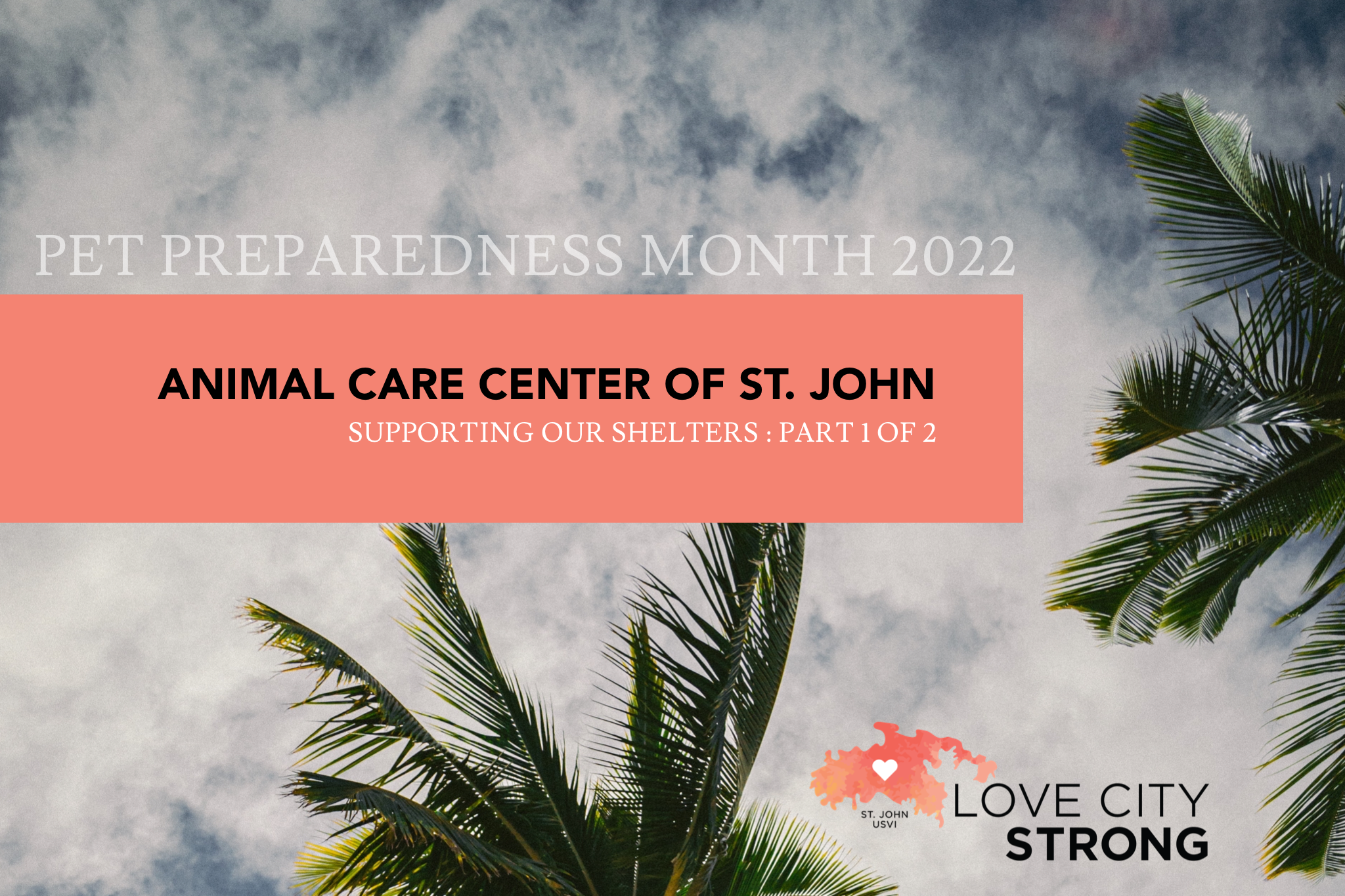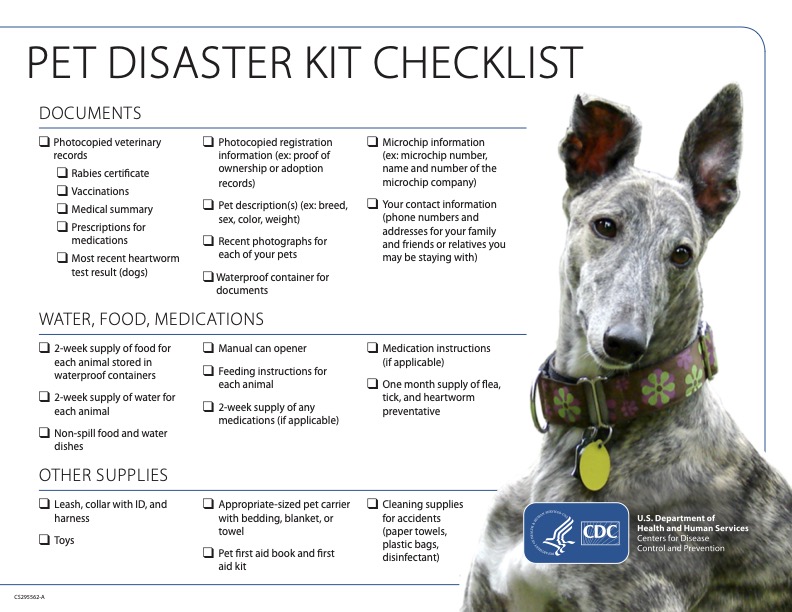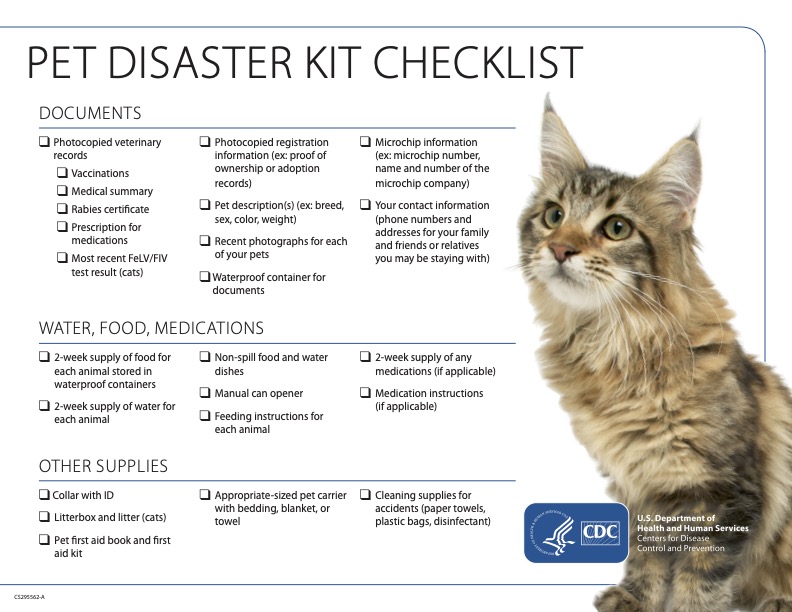
Pet Preparedness : Supporting our Shelters, Part 1 of 2

When a major hurricane impacts the Territory, many support services are interrupted or stretched beyond their capacity. In the context of Pet Preparedness Month, we wanted to reach out to the animal shelters on St John and St Thomas to learn more about how they prepare, and how the community can help.
- What does the shelter do to prepare for hurricanes?
Ryan Moore, Shelter Manager at the Animal Care Center of St John, says that their primary concern is making sure they have everything they need in terms of supplies. After a storm, with supply chains disrupted, it can be difficult to source food and other necessities for the shelter animals.
“When the storms hit in 2017 I don’t think anyone realized how crazy it was going to be, so we were just left with what we had in-house to get by… Making sure we have what we need for those first few weeks is important”
If a storm is incoming, the shelter also makes sure to prepare the building as much as possible. Waterproofing and weatherproofing the facility, storing tools and equipment, and bringing as many of the animals inside as possible are all part of the preparations. Ryan is optimistic about this season given that “in house numbers are very low mainly just kittens and cats at the moment”, which means that finding space inside or finding fosters for animals will be more manageable.
- How can residents help make sure that more animals don’t end up in shelters following a storm? How can people keep their pets safe during a storm?
According to Ryan, “owners can do a number of things to prevent animals ending up in shelters”.
- Make sure your dog or cat has some sort of ID. Microchips are best. If owners get their pets chipped and they end up in a shelter, they can scan the pet to figure out where they belong. The ACC now provides this service for residents if they want it done.
- Write a number on your pet’s collar with a sharpie as an extra precaution.
- Many dogs on island live outside, so these identifiers are really important, as well as making sure these animals have a safe place to ride out the weather – which is not leaving them in the yard on a tie out to fend for themselves.
- It’s important for families who travel during the summer to make sure you have a plan in place for pets if with a pet sitter. In case they get stuck stateside and the animals are being watched here. We saw numerous situations like that during Irma. We ended up having to step in to help these owners get their pets back.
See the bottom of this post for a thorough checklist that the Animal Care Center of St. John recommends pet owners follow when preparing pets for disasters.
- Does the shelter need more fosters for the animals if a storm is coming?
According to Ryan, “Finding fosters has always been hard on island, just given the dynamic of the island, housing issues etc. But YES, fosters would always be great as long as it’s a safe situation”. If you’re in a position to foster an animal, please reach out to the ACC.
- Does the shelter have any specific needs to be prepared for this hurricane season?
Ryan says, “when it comes to needs for hurricane season, we can always use donations throughout the summer. Food, cleaning supplies, and medications are important, and having crates is always a plus. The rigid plastic crates that we use to transport animals on flights are hard to come by on STT/STJ and if we can find them locally they are expensive. The more we have on hand, the more animals we can get out quickly if a storm comes”.
The organization is replacing a portion of the roof on the cat porch, and hopefully those repairs will be completed in the next week or so.
If you would like to donate to support the Animal Care Center of St John, they accept donations through PayPal: https://www.stjohnanimalcarecenter.com/donate/
To support Love City Strong’s preparedness efforts, you can donate through our website.
Stay tuned for next week’s blog post when we hear from The Humane Society of St. Thomas about their pet preparedness routines!


